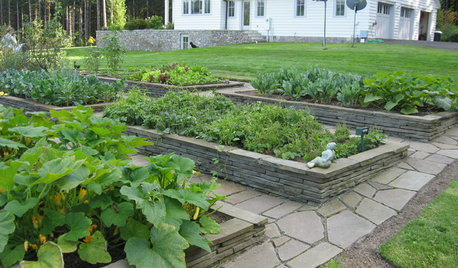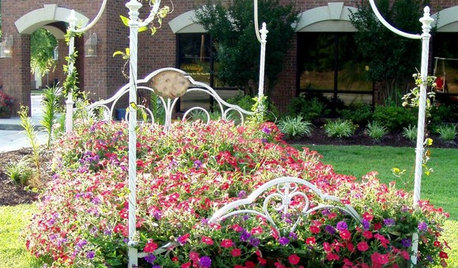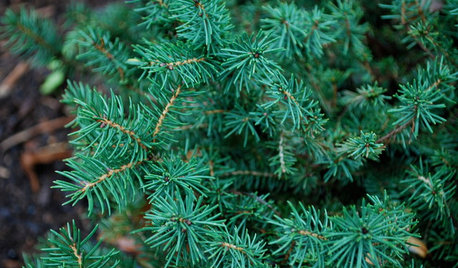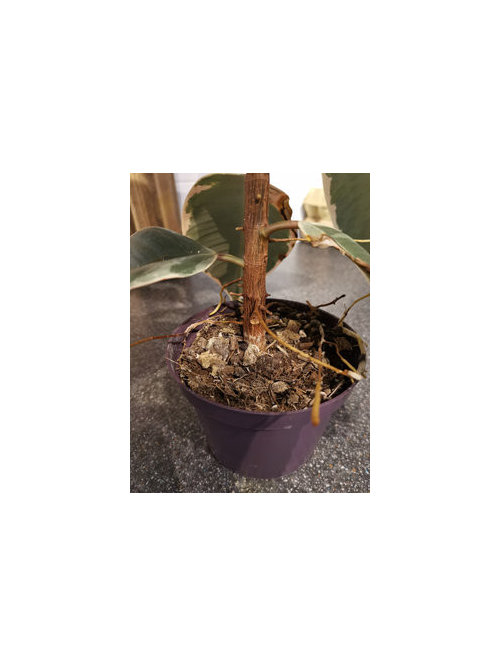Time to repot my rubber plant?
kduffs2
2 years ago
last modified: 2 years ago
Related Stories

FLOWERS AND PLANTSPlant Rubber Rabbitbrush for Its Brilliant Blaze of Gold in Fall
The western North American shrub ‘Ericameria nauseosa’ has masses of tiny flowers that attract pollinators
Full Story
HOUSEPLANTSGot Bright Light but Lack Spare Time? Try Ponytail Palm
This low-maintenance houseplant has an exotic look and a drought-tolerant nature. Just give it lots of sun
Full Story
LANDSCAPE DESIGNThese 4 Planting Strategies Can Save You Money
Use seeds, plugs and more to keep costs down as you fill out your garden
Full Story
GARDENING GUIDESWhen and How to Plant a Tree, and Why You Should
Trees add beauty while benefiting the environment. Learn the right way to plant one
Full Story
HOUSEPLANTS8 Essentials for Healthy Indoor Plants
Houseplants add so much to our homes — and can thrive when grown in the right conditions. Keep these tips in mind
Full Story
CONTAINER GARDENSYes, You Can Grow a Plant In That
You can upcycle your old typewriter, paint cans, tires and many more things into places for your plants
Full Story
GARDENING GUIDESGreat Design Plant: Picea Abies ‘Nidiformis’
Bird’s nest spruce pulls its weight in the winter garden by providing structure and interest
Full Story
GARDENING GUIDESMake Sure You Read This Before Buying New Plants
Follow these 10 plant-selection tips to avoid buyer’s remorse
Full Story
SUMMER GARDENINGHow to Water and Refresh Your Potted Plants Over the Summer
Keep container gardens looking lush by cooling them down when temperatures rise and by giving them a seasonal spruce-up
Full Story
HOUSEPLANTS10 Top Plants to Grow Indoors
Brighten a room and clean the air with a houseplant that cascades artfully, stretches toward the ceiling or looks great on a wall
Full StoryMore Discussions














ken_adrian Adrian MI cold Z5
socks
Related Professionals
Danbury Landscape Architects & Landscape Designers · Ashland Landscape Architects & Landscape Designers · West Milford Landscape Architects & Landscape Designers · South Orange Landscape Architects & Landscape Designers · East Patchogue Landscape Architects & Landscape Designers · Beverly Hills Landscape Contractors · Cupertino Landscape Contractors · Essex Landscape Contractors · Lyndhurst Landscape Contractors · Secaucus Landscape Contractors · Wailuku Landscape Contractors · Bel Air North Interior Designers & Decorators · Clinton Township Interior Designers & Decorators · Lake Elsinore Interior Designers & Decorators · Fairfax Handymantapla (mid-Michigan, USDA z5b-6a)
kduffs2Original Author
tapla (mid-Michigan, USDA z5b-6a)